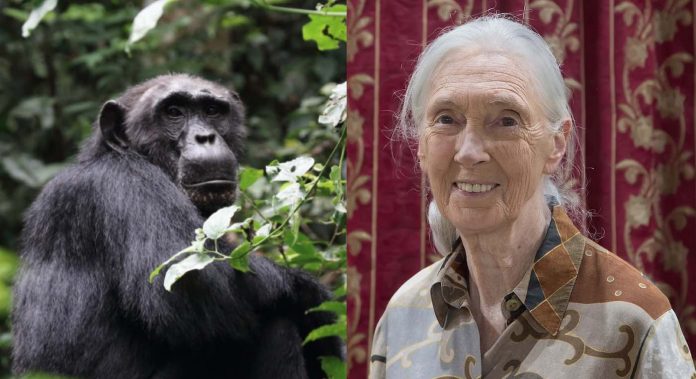Happy Birthday to Dame Jane Goodall who turns 90 years old today. The beloved British primatologist first observed chimpanzees creating tools in 1960 (and 2 years earlier had been a secretary). It was the first time that an animal was observed to modify an object to create a tool for a specific purpose. She studied at Cambridge, became Dr. Jane Goodall, and put forth another unconventional idea for the time: “It isn’t only human beings who have personality, who are capable of rational thought [and] emotions like joy and sorrow.” READ more about her work… (1934)
Small Town Grocer’s Easter Egg Mistake is Turned into Inspiring National Charity Drive Raising Thousands

On an island off the coast of an island, a local grocer’s big error turned into a successful national charity event.
Dan Dafydd wanted 80 chocolate Easter eggs for the shelves at Sinclair General Stores on Sanday, one of the Orkney Islands, but accidentally ordered 80 cases of Easter eggs, totaling 720 confectionaries for a total island population of 500.
Wondering what he was going to do with the excess, his heart overtook his mind, and decided to raffle off groups of 100, with proceeds going to the Royal National Lifeboat Institution, (RNLI) the largest of the lifeboat services operating around the coasts of the British Isles which rescue dozens of people and vessels every year.
It proved to be a huge hit on Sanday, with £3,000 being raised to win batches of 100 eggs. It was so popular that in the ultimate irony, Dafydd had to order more chocolate eggs.
“We actually took a delivery of eggs yesterday because we ran out. We needed to buy more in the end. People have wanted them signed and all sorts,” said Mr. Dafydd to the Guardian.
“Once word spread a bit and I was invited to talk on local radio, I thought ‘it’s not bad enough to be a laughing stock on this island, but to be one all over Orkney.”

From the shores of Albion, it carried across world media, with the grocer soon receiving stacks of letters from people as far afield as Singapore writing to say how inspirational he was.
OTHER STORIES LIKE THIS: College Project Sparks Student to Start Orphanages for Homeless Kids in Philippines: ‘Why haven’t I started this?’
Many of the chocolate eggs were manufactured by Nestlé, who contacted Mr. Dafydd with the proposal that they would match any donations received for the RNLI up to £10,000 with the aim of raising £20,000 by Easter Sunday.
“It’s incredible to see how a simple mistake can turn into an opportunity to make a positive impact,” said Beth Lucas, the marketing director for confectionery at Nestlé UK & Ireland in a statement. “Together, we aim to raise up to £20,000 for the RNLI and contribute to the invaluable work they do.”
MORE UNORTHODOX FUNDRAISING: Man Joked About Throwing a Walmart Christmas Party and Thousands RSVPed–So He Made it a Huge Toy Drive
Dafydd said that even without the help of Britain and Nestlé the immediate community on the Orkneys had purchased so many raffle tickets that they won 300 of the eggs, showing how close-knit and big-hearted his local community is.
SHARE This Man’s Fortuitous Error And The Amazing Response…
Hero Bank Teller Saves Customer From Losing Millions on a Scam–by Asking a Few Simple Questions

An Australian bank representative recently yanked an unsuspecting woman back from the brink of the financial oblivion she was about to throw herself into resulting from an internet scam.
Westpac Bank trains its employees to poke questions at anyone engaging in strange transactions, and after the teller’s suspicions were aroused, she was proven right every step of the way.
It’s an example, says Westpac’s Head of Fraud and Financial Crime Insights Ben Young, of how valuable the person-to-person interaction is in the private commercial banking industry, and a regrettable loss of branch closures across the country.
But as regards the scam, teller Mariana Karbowski at the Liverpool Branch noticed a woman in her 70s seemed nervous coming in with the news that she was going to sell her home, and that she wished to cancel the home insurance she had through Westpac.
Asking why she was planning to sell, Karbowski got the unsatisfactory answer that the woman needed to “help her son.” Inviting the woman into one of the personal offices, Karbowski dug a little deeper and found out the real reason the woman was going to make one of the largest financial decisions of her life: she needed to free her boyfriend from an overseas prison.
Speaking of jail, Karbowski took no prisoners when she heard this was the woman’s motivation.
“My next question was, please tell me the last time he took you out for a coffee, and she said, ‘Actually, never, we met online,'” Karbowski told Channel 9 News.
It didn’t take long for the teller, whose very father was scammed out of millions as it happens, and who decided to run a reverse image search on Google of the man the woman claimed was her internet boyfriend, to discover that many of the photos the client received from the man were online but with different names.
FINANCIAL RESCUE OPERATIONS: Hero Post Office Worker Saves Senior From Sending Thousands of Dollars to a Scammer
“We cried together and I walked her to the police station to report it,” she said, “We care and when we see those red flags, we act.”
Internet scamming and fraud is a black market that pilfers tens of billions around the world, and it’s Karbowski’s training and insight that Ben Young hopes to capture for a new security feature on Westpac’s online banking suite, powered by AI, that asks exactly the sort of questions that you would ask a loved one if they told you: “I’m about to send $50,000 to some foreign corner of the world.”
It asks how you came to know this person, what are some things they have said or promised you, and if the AI is not satisfied with the transaction, it will block it and notify the fraud department who will then reach out to the client and discuss the transaction.
MORE STORIES LIKE THIS: Bank Decides it Should have Prevented Dementia Depositor from Getting Scammed–So Restores Entire Life Savings
While it may seem like an abrasive invasion of personal decision-making, scammers and fraudsters often target people who are not of sound mind, such as those with dementia, those who live alone, or internet illiterates.
Perhaps Westpac also saw the story of ANZ Bank’s decision to reimburse an elderly client’s life savings worth AUD$500,000 that was stolen by scammers. The client has early-stage dementia, and the fraud department concluded after an internal investigation that they should have done a lot more to protect his account.
WATCH the story below from Channel 9…
SHARE This Hero Bank Teller And Important Lesson With Your Friends…
New Solar-Powered Desalinator Keeps Producing Clean Water Without Needing Sunshine

Scientists have developed a new solar-powered system to convert saltwater into fresh drinking water which they say could help reduce dangerous the risk of waterborne diseases like cholera.
Via tests in rural communities, they showed that the process is more than 20% cheaper than traditional methods and can be deployed in rural locations around the globe.
Building on existing processes that convert saline groundwater to freshwater, the researchers from King’s College London, in collaboration with MIT and the Helmholtz Institute for Renewable Energy Systems, created a new system that produced consistent levels of water using solar power, and reported it in a paper published recently in Nature Water
It works through a process called electrodialysis which separates the salt using a set of specialized membranes that channel salt ions into a stream of brine, leaving the water fresh and drinkable. By flexibly adjusting the voltage and the rate at which salt water flowed through the system, the researchers developed a system that adjusts to variable sunshine while not compromising on the amount of fresh drinking water produced.
Using data first gathered in the village of Chelleru near Hyderabad in India, and then recreating these conditions of the village in New Mexico, the team successfully converted up to 10 cubic meters, or several bathtubs worth of fresh drinking water. This was enough for 3,000 people a day with the process continuing to run regardless of variable solar power caused by cloud coverage and rain.
Dr. Wei He from the Department of Engineering at King’s College London believes the new technology could bring massive benefits to rural communities, not only increasing the supply of drinking water but also bringing health benefits.
MORE DESALINATION ADVANCEMENTS: Wave-Powered Desalination System Produces 13,000 Gallons of Drinking Water a Day From Each Buoy
“By offering a cheap, eco-friendly alternative that can be operated off the grid, our technology enables communities to tap into alternative water sources (such as deep aquifers or saline water) to address water scarcity and contamination in traditional water supplies,” said He.
“This technology can expand water sources available to communities beyond traditional ones and by providing water from uncontaminated saline sources, may help combat water scarcity or unexpected emergencies when conventional water supplies are disrupted, for example like the recent cholera outbreaks in Zambia.”
In the global rural population, 1.6 billion people face water scarcity, many of whom are reliant on stressed reserves of groundwater lying beneath the Earth’s surface.
However, worldwide 56% of groundwater is saline and unsuitable for consumption. This issue is particularly prevalent in India, where 60% of the land harbors undrinkable saline water. Consequently, there is a pressing need for efficient desalination methods to create fresh drinking water cheaply, and at scale.
BRINGING CLEAN WATER TO THE WORLD: After Five Years of Drought, Kenyan Region Finally Gets Clean Water Thanks to Solar-Powered Saltwater Plant
Traditional desalination technology has relied either on costly batteries in off-grid systems or a grid system to supply the energy necessary to remove salt from the water. In developing countries’ rural areas, however, grid infrastructure can be unreliable and is largely reliant on fossil fuels.
Creating a low-cost ‘battery-like’ desalination technology removes the reliance on battery technology for using intermittent solar energy in off-grid applications, enabling affordability to rural communities in developing countries like India.
“By removing the need for a grid system entirely and cutting reliance on battery tech by 92%, our system can provide reliable access to safe drinking water, entirely emission-free, onsite, and at a discount of roughly 22% to the people who need it compared to traditional methods,” He said.
The system also has the potential to be used outside of developing areas, particularly in agriculture where climate change is leading to unstable reserves of fresh water for irrigation.
YOU MIGHT ALSO LIKE: In ‘Mega Milestone’ India Connects 80 Million Rural Households to Water Supply in Just 4 Years
The team plans to scale up the availability of the technology across India through collaboration with local partners. Beyond this, a team from MIT also plans to create a start-up to commercialize and fund the technology.
“While the US and UK have more stable, diversified grids than most countries, they still rely on fossil fuels. By removing fossil fuels from the equation for energy-hungry sectors like agriculture, we can help accelerate the transition to Net Zero,” He said.
“The next step for us is to apply this low-cost technology to other sectors, including wastewater treatment, and producing alkaline to make the ocean more alkaline to help it absorb more CO2 from the atmosphere. By taking this approach not only can we decarbonize agriculture, but wider environmental and climate benefits as well.”
SHARE This Invention That Could Change The World On Social Media…
Dog Named Hero Saves Owner’s Life for Days, Fighting Off Cold and Coyotes and Getting Help

An Akita named ‘Hero’ saved his owner’s life last week in an incredible tale of loyalty and resilience that saw him remain by his side through two frigid Alberta nights, fend off coyotes, and eventually alert rescuers.
Winning plaudits for his name and deed the world over, a GoFundMe raised $3,000 to cover the veterinary bills of Hero by the shelter that is keeping him safe and warm while his owner recovers.
The story began with an attack: when a passerby named Curtis Dahl was walking in a field of mud and grass near the sugar factory in the town of Taber, and Hero came running up and bit his dog around the neck.
Dahl claims he tussled with Hero for ten minutes trying to get him off his dog, and needed stitches on his finger by the end of it.
Calling police and animal services with a complaint, he alerted them to Hero’s presence, but when the officers arrived and saw Hero lying down exhausted near a terraced plot of grass and weeds near the road, they suddenly heard a cry for help.
Arriving, they found a 61-year-old man on his back in a ditch, shivering and unable to move. He told police he’d been stuck there for two days while Hero protected him.
While the man was taken to a hospital, Hero was taken to Taber Lost Paws Society, an animal shelter that has a special program to look after dogs during periods of crisis or injury. As it happened, the society’s acting president Alana McPhee said they had an employee who was the injured man’s neighbor and knew that he had another Akita dog named Tora.
YOU’LL DEFINITELY LIKE: Pit Bull is Sworn in by Police as ‘Paw-trol Officer’ After He Showed Up One Day and Found Fur-ever Home
Reported missing two days prior, Tora eventually turned up in her owner’s yard with a disabled leg after screws and rods in her leg from a previous injury had come loose. They suspect she had been back and forth from the site where her owner fell to the home several times, or perhaps could have been fighting, though she had no bite or puncture marks.
MORE HEROIC DOGS: Dog That Won’t Stop Digging Saves Entire Neighborhood After They Find Dangerous Gas Leak Underground
Once informed of the full story, the man whose dog had been attacked by Hero was “understanding of the situation” and was grateful Hero’s owner was rescued. He later received compensation for the medical costs to his dog and himself via CAD$3,000 that was raised from a GoFundMe organized by the Lost Paws Society.
“(Hero) was being protective. That dog probably had not eaten for several days. He was incredibly stressed and, obviously, powerless to help his owner. He had to fight off coyotes,” McPhee said.
WATCH the story below from CBC News…
SHARE This Hero By Name And By Nature With Your Dog Loving Friends…
Good News in History, April 2
40 years ago today, Rakesh Sharma became the first Indian ever launched into space when he rode aboard the Interkosmos Soyuz T-11 to the Soviets’ space station Salyut-7. He remains the only Indian citizen to reach the final frontier. Sharma spent 7 days, 21 hours, and 40 minutes aboard the Salyut 7 during which his team conducted scientific and technical studies which included forty-three experimental sessions. His work was mainly in the fields of bio-medicine and remote sensing. READ more… (1984)
“A drawing is simply a line going for a walk.” – Paul Klee
Quote of the Day: “A drawing is simply a line going for a walk.” – Paul Klee
Photo by: Alexandru Scurtu (cropped and enhanced)
With a new inspirational quote every day, atop the perfect photo—collected and archived on our Quotes page—why not bookmark GNN.org for a daily uplift?

Gorillas Use Chest Beating to Prevent Conflict, Not Provoke it, a New Study Finds
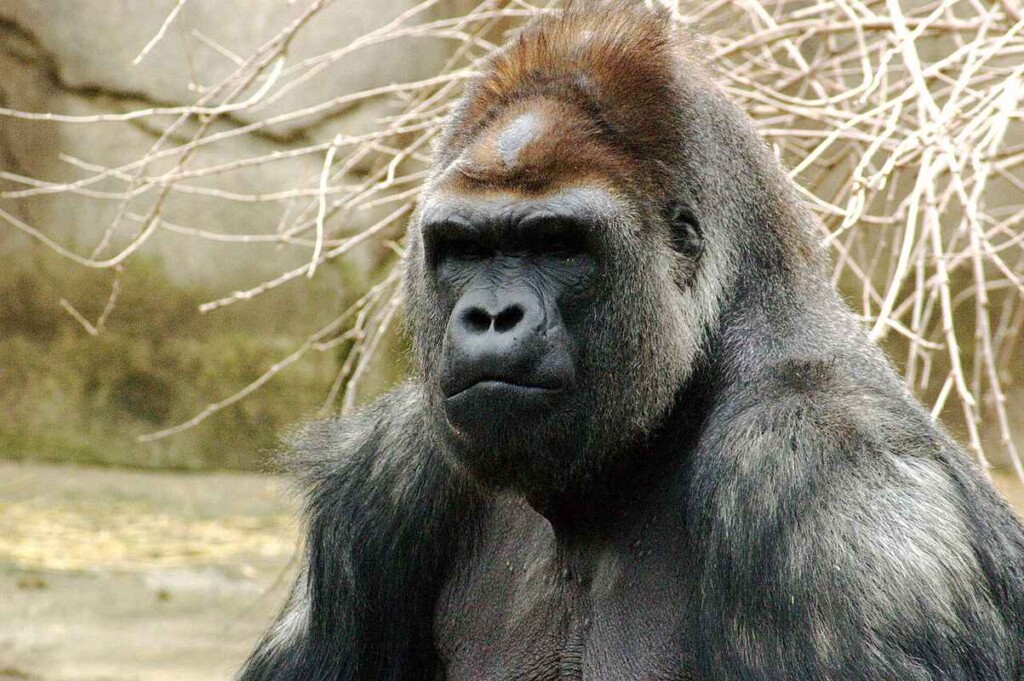
A gorilla’s chest beating is an incredible sight, and sound, to behold, but new research based on years of observation of mountain gorillas shows there’s much we never understood about this iconic acoustic.
Since people first went to see King Kong, or since gamers first met Donkey Kong from the Mario Bros franchise, most might say male gorillas beats their chests with their fists, and as a sign of challenge or triumph.
Apart from the fact that they use cupped hands, it seems to serve a number of functions—a challenge not necessarily being one of them.
Edward Wright, a primatologist at the Max Planck Institute, spent between 2014 and 2016 observing 500 chest beats from 25 different silverback mountain gorillas in Rwanda’s national parks.
Using acousitc monitoring equipment he and his colleagues determined that the chest thumping was an honest demonstration of body size. This hints at several organizational aspects of gorilla social life. The first is that larger animals were recorded at lower frequencies which could travel half a mile.
By beating their chests, air sacks underneath their larynx reverberate from the kinetic energy, producing a sound, and the bigger the male, the deeper the sound. This is believed to broadcast how big and dominant a male gorilla is as a means of keeping rival males away from their social group.
Furthermore, it’s believed that each thump may act as a calling card, with members of a dominant male’s group being able to identify the silverback from this sound.
CHECK THESE OUT: Monkeying Around? All 4 Types of Apes Have a Sense of Humor– Researchers Categorize Their Clowning in Video
The second aspect was that while sound depth and body size were correlated, body size and frequency of chest thumping instances did not—the dominant males didn’t pound their chest any more than their smaller rivals. This presented Dr. Wright and his colleagues with a fascinating suggestion—the chest thumping is used difuse fights, rather than provoking them.
Along with smaller males hearing the chest thumps of a dominant male and knowing to steer clear, by returning the sound with their own puny chest thumps, they can alert the dominant male to their presence while simultanously demonstrating they’re no match physically due to the higher frequency of their thumping sounds.
MORE INTERESTING ANIMAL BEHAVIOR: Bumblebees Share Knowledge Like Humans and Chimpanzees, Suggesting the Hive Mind Is More Personal
“Even if you’re likely to win a fight, there is still quite a high-risk factor,” Dr. Wright told National Geographic. “These are large, powerful animals that can do a lot of damage.”
How the chest thumps affect the female half of gorilla society is even less well-studied, but the scientists knew at the initiation of their observations that males beat their chest more when the females in their social group enter esterus, and that larger males make deeper calls which were both found to correlate to reproductive success.
Future studies will examine whether a large male’s chest beating can act as a siren’s song as it were, and pull females away from other social groups.
SHARE This Insight Into The Less-Gentle Side Of These Gentle Giants…
The Story of How Rapa Nui Lost its Flowering Trees, But Humans Ensured its Survival

If you’re the kind of person who likes rare things, then the toromiro tree would be a truly exceptional addition to your ornamental garden.
That’s the only place you’re likely to find the toromiro these days, 70 years after it went extinct on its native island of Rapa Nui—which most people are likely to know only by its Western name—Easter Island.
Buoyant and salt-resistant, it’s believed the toromiro tree arrived on Rapa Nui 35,000 years ago, and populated the understory of the island’s rich palm tree forests that once existed there.
The tree itself is a remarkable thing, though it could be more accurately described as a shrub rather than a tree. It belongs to the genus Sophora, which is an overcrowded collection of 60 highly varied individuals found all over the Pacific.
Sophora toromiro produces beautiful flowers of yellow drapery reminiscent of those little ghosts made in elementary school out of marshmallows and tissues for Halloween decorations. Its reddish wood is fine-grained and excellent for carving—into statuettes, paddles, and kitchen utensils; examples of which lie in museum collections and which can remain in fine condition after hundreds of years.
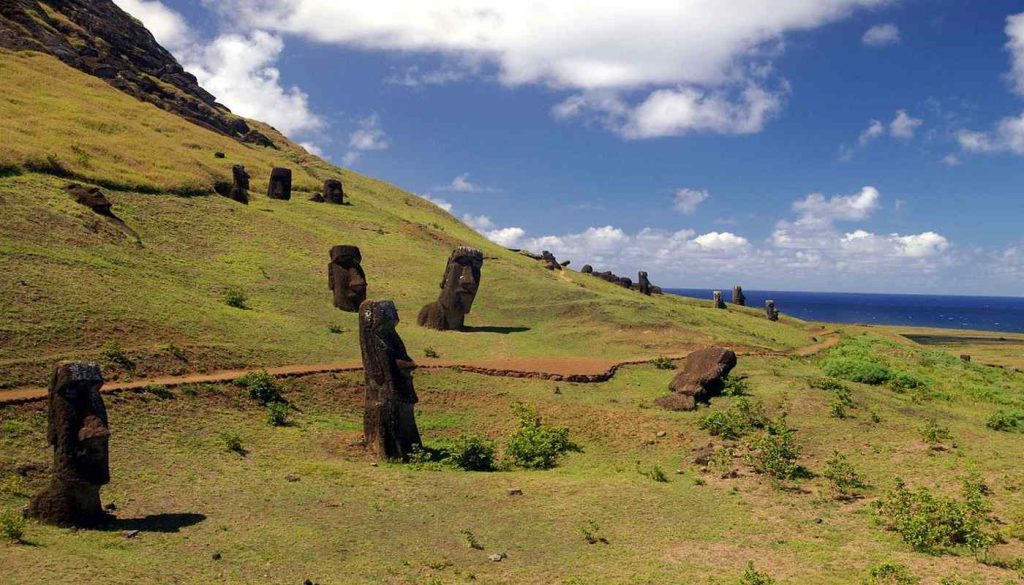
Its home of Rapa Nui is a famous case study for human influence on the ecosystem. It’s believed, though also disputed, that the Polynesian settlers of Rapa Nui got a little carried away, shall we say, building the giant Moai statues that make the island so famous today as a tourist destination.
OTHER SUPER RARE TREES: Dinosaur Evergreens Thought Extinct for 2Mil Years Discovered by Park Ranger–the Grove is the ‘Find of the Century’
The palm trees’ branchless trunks made them ideal for use as rollers to move the large stone carvings, some weighing as much as 80 tons, across the landscape. This special use case, along with the need for building boats, firewood, and all other anthropogenic uses, led to mass deforestation and soil degradation which took out the toromiro tree that had been growing in the shade under the palms.
OTHER SUPER RARE TREES: Texas Oak Tree Thought to Be Extinct Discovered in Big Bend National Park
The global climatic elements of the Little Ice Age are also theorized as contributing to the downfall of the palm forests that may have numbered 15 million trees when settlers first arrived.
European settlers added another group of destructive elements that the Polynesians could not—invasive animals. Three species of rats introduced to the island began to prey on the toromiro seeds, reducing their rate of gestation even further to the point that in 1911 when a Chilean botanist arrived to survey the island, he found a single specimen clinging on in the island’s central crater.
This was confirmed by the Swedish botanist Carl Skottsberg, who also recorded there being only one in 1917. Thirty-eight years later, the famous explorer and anthropologist Thor Heyerdahl arrived in his hand-made boat, and sure enough, just one toromiro existed on the whole island; the soil being too poor and waterlogged for the tree to gestate even after three decades.
MORE STORIES OF SURVIVAL LIKE THIS: ‘Important Message of Hope’ Made by Re-Planting Extinct Tree Species on Hawaii
This scraggly survivor had a single branch bearing flowers and seeds, which Heyerdahl collected, safely stored, and passed off to a friend of his named Olaf Selling who propagated the tree in Gothenburg.
As it turned out though, Efraín Volosky Yadlin, an Argentinian-born immigrant to Chile, also collected seeds from the same individual tree, which is why the toromiro and its beautiful flowers can be found in Chilean as well as European botanical gardens.
In 1962, when a German meteorologist climbed down into crater, he found the Heyerdahl-Yadlin specimen was gone.
ALSO CHECK OUT: Flower That Grew Only in York Brought Back From Extinction After 30 Years—First Ever British De-Extinction
So the story of the toromiro’s demise, reported here as an excerpt from Daniel Lewis’ recent book, Twelve Trees: The Deep Roots of Our Future, was almost entirely brought about by the hands of mankind, but so too was its survival.
Maybe palms will one day grow on Rapa Nui again; some passion project by rewilding enthusiasts perhaps. If so, hundreds of toromiro trees stand ready to propagate their old homeland, thanks to enterprising explorers who thankfully knew how to keep mold out of seed packets.
SHARE This Amazing Story From An Amazing Place With Your Friends…
Coffee Grounds Show Potential to Clean Up Common Water Contamination from Agriculture
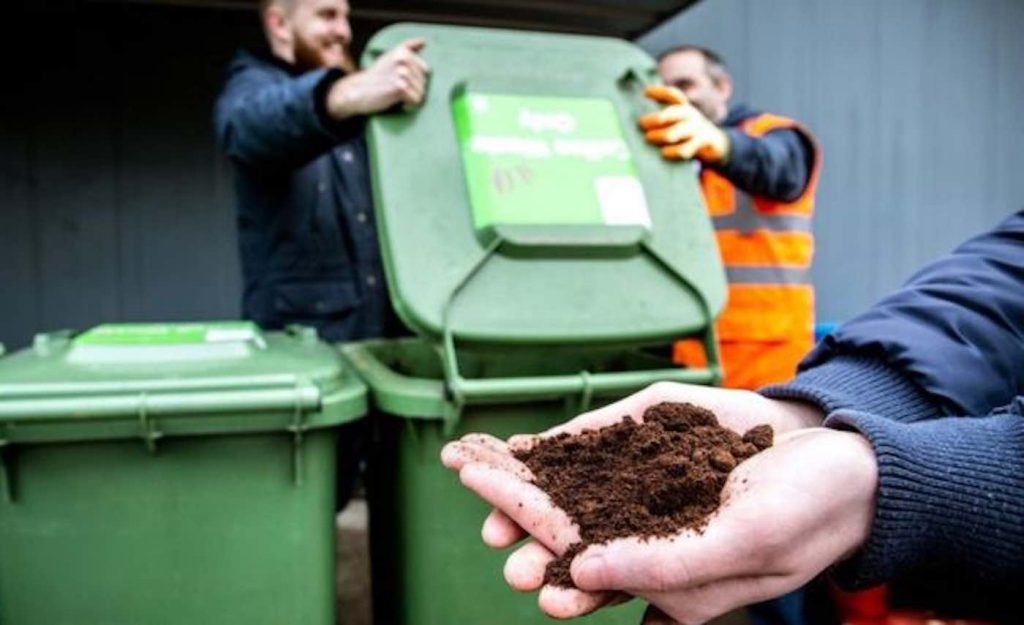
Coffee grounds have been tested in a laboratory setting for their potential use as a cleanup agent of common agricultural runoff, suggesting that along with compost, snail repellent, and many other uses, used coffee grounds could protect water sources from agricultural pollution.
The study looked at bentazone—a common herbicide used in agriculture, and found that when coffee grounds are activated with zinc chloride the carbon molecules therein could remove 70% of the bentazone content from contaminated water.
Agricultural runoff from vegetable and grain farming is one of the largest sources of water pollution in human society. Chemicals or fertilizers are spread over fields, and rains wash the excess into the waterways. Herbicides, pesticides, and fungicides wreck having on riverine lifeforms, while the excess phosphorus and nitrogen cause algal blooms in bays and estuaries, choking the life from seagrass and other species.
On a brighter note, gardeners, responsible business owners, and inventors all over the world use coffee grounds for all kinds of things, and the scope of their second and third-use values is growing every year.
Along with mixing them into compost or ensuring they’re responsibly recycled, innovators have been taking coffee’s unique chemical composition and adding it to concrete, shoes, furniture, low-income housing, and more.
Millions of tonnes of coffee grounds are nevertheless produced every year and sent to landfills where they decompose and emit greenhouse gases.
COFFEE FOR HEALTH: Coffee is Now Linked to Reduced Risk of Many Ailments, Including Liver Disease, Parkinson’s, Melanoma, Even Suicide
Scientists from Brazil’s Federal Technological University of Paraná propose in their study that used coffee grounds could be utilized to clean up excess bentazone, which has been detected in some water systems at levels above the legislated limits for the European Union’s Water Framework Directive.
OTHER COFFEE USE STORIES: Brooklyn’s Yafa Café Supports Growers in War-Torn Yemen – the Surprising Birthplace of the Coffee Bean
Though not outrightly identified as a carcinogen, bentazone has been shown to affect human health if ingested, inhaled, or absorbed through the skin.
The authors recommend an industrial-scale experiment of coffee and bentazone, but admit that it has the potential to act as a key component in a circular economy where coffee is consumed and then spread over fields as a way to remove excess herbicides, while also providing benefits as a compost.
KNOW Anyone Who Runs A Coffee Shop? SHARE This Additional Use For Grounds…
Compared with 75 Years Ago the Human Brain Is Bigger, With a ‘Reserve’ Against Dementia

Compared to those who sailed away to fight in World War II, and to those who awaited their return, the average brain size in a human today has grown 6.6%, according to a new study.
In addition to being 6.6% denser, the surface area of a modern brain is around 15% larger as well.
These findings suggest that humans today may be able to better stave off neurodegenerative diseases like dementia, which primarily manifest in a shrinking brain.
The finding comes from a team at UC Davis that analyzed 75 years’ worth of brain changes between generations.
“Larger brain structures like those observed in our study may reflect improved brain development and improved brain health,” said Dr. Charles DeCarli, director of the UC Davis Alzheimer’s Disease Research Center.
“A larger brain structure represents a larger brain reserve and may buffer the late-life effects of age-related brain diseases like Alzheimer’s and related dementias.”
The study, published in the journal JAMA Neurology used brain magnetic resonance imaging (MRIs) from participants in the Framingham Heart Study that were taken in 1999 and 2019.
The Framingham Heart Study was launched in 1948 in Massachusetts to analyze patterns of cardiovascular and other diseases. The original cohort consisted of 5,209 men and women ages 30 to 62.
The research has continued over the years and now includes second and third generations of participants born during the 1930s through to the 1970s.
“The decade someone is born appears to impact brain size and potentially long-term brain health,” Dr. DeCarli, added.
DeCarli said that life and lifestyle choices such as those related to health, social activity, cultural behavior, and educational attainment—may all play a role in determining brain size.
YOU MAY ALSO LIKE: Smartphones ‘Can Boost Memory Skills’ by Freeing Up Our Brains to Remember Other Things
The brain study consisted of 3,226 participants, with 53% female and an average age of about 57 at the time of the MRI. Researchers found gradual but consistent increases in several brain structures.
For participants born in the 1930s, the average brain volume was 1,234 milliliters, compared to those born in the 1970s, who possessed 1,321 milliliters, or about 6.6% greater volume.
But the cortical surface area, a measure of the brain’s surface, showed an even greater increase over time.
HOW THE BRAIN CHANGES: A Scientific Observation of Love and Loss on the Cellular Level
Those born in the 1970s had an average surface area of 2,104 square centimeters compared to 2,056 square centimeters for participants born in the 1930s, almost a 15% cent increase in area.
Although the numbers are rising with America’s aging population, the incidence of Alzheimer’s—the percentage of the population affected by the disease—is decreasing. A previous study found a 20% reduction in the incidence of dementia per decade since the 1970s. Improved brain health and size may be one reason why.
SHARE This News With Anyone You Know Worried About Dementia…
“The man who is swimming against the stream knows the strength of it.” – Woodrow Wilson
Quote of the Day: “The man who is swimming against the stream knows the strength of it.” – Woodrow Wilson
Photo by: Sander Dechering (Norway Neset Bru)
With a new inspirational quote every day, atop the perfect photo—collected and archived on our Quotes page—why not bookmark GNN.org for a daily uplift?

Good News in History, April 1
51 years ago today, the federal government of India, under the administration of Indira Gandhi, implemented Project Tiger, a comprehensive strategy to try and reverse the decline of India’s Bengal tigers across the country. By 2006, camera trap surveys created an estimate that the total tiger population numbered 1,411 individuals. It was claimed that owing to the project, the number of tigers increased to 2,603–3,346 individuals by 2018. READ more of its accomplishments and lessons learned… (1973)
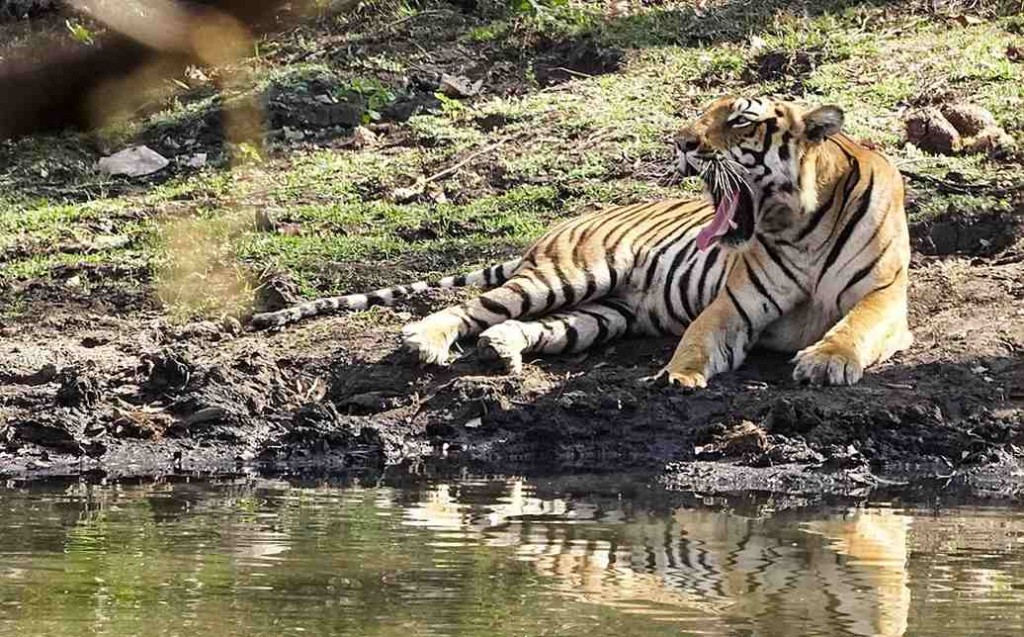
Chief among the lessons learned from mistakes made was alienating indigenous and rural communities from decision-making and consultation. These groups were thrown off their land to make way for tiger reserves, but were often those whose livelihoods depended most on the forests remaining intact—if they remained poor the forests and tigers diminished, if their lot in life was improved, the forests and tigers would grow.
From the project’s start to the early 2000s, the initial 9 tiger reserves covering an area of 3,519 square miles had been increased to 23 tiger reserves encompassing an area of 13,000 square miles (33,000 km2).
MORE Good News on this Date:
- The U.S. House of Representatives first met in New York City with the 435 members holding its first quorum, electing Frederick Muhlenberg of Pennsylvania as its first Speaker (1789)
- A London-Paris telephone connection was opened (1891)
- President Nixon signed a law that required the Surgeon General’s warnings to be placed in view on all tobacco products, and banned cigarette advertising on TV and radio (1970)
- The world’s seven wealthiest nations, the G7, agreed to give $24 billion in aid to the states formerly known as the USSR (1992)
- Same-sex marriage became legal in the Netherlands (2001)
- The Netherlands legalized euthanasia, becoming the first nation in the world to do so (2002)
- Google launched its Gmail service to the public and within 12 years the free email service had one billion active users worldwide (2004)
58 years ago, the first World Festival of Black Arts was organized and held over the month of April in Dakar, Senegal. Artists of every form hailing from 45 African, European, Caribbean, and North and South American countries came to display the first collected artistic works of the African Diaspora. Among those were everyone from Duke Ellington to a capoeira troupe from Bahia, to historian Cheikh Anta Diop, who wrote extensively on post-colonial Africa, and spent an academic career fighting against a bizarre prevailing theory that the ancient Egyptians were somehow a White European culture.

Present also were writers, such as the Harlem Renaissance poet Langston Hughes, and Wole Soyinka the Nigerian author and first sub-Saharan African to win the Nobel Prize for Literature. Dancers and other musicians rounded out the performances, and William Greaves, an African American filmmaker, produced a 50-minute documentary.
The festival has been held in other years, including 1977 and 2009. (1966) WATCH The intro to a documentary about the festival…
And, 48 years ago today, the Apple Computer company was founded by Steve Jobs, Steve Wozniak and Ronald Wayne to sell their ground-breaking Apple I personal computer kits. Their startup is now the most valuable company in the world. (1976)

And 84 years ago today, Wangari Maathai, the Kenyan environmental activist and scientist who started the Green Belt Movement, was born. Focused on planting trees, she became the first African woman to receive the Nobel Peace Prize for “her contribution to sustainable development, democracy and peace”. Started in 1977 and run mostly by women, Maathai’s movement has planted over 51 million trees and trained 30,000 women in forestry, agriculture, and bee-keeping, helping them earn a living while preserving land. She was also a member of Kenya’s Parliament and the first Eastern African woman to receive a Ph.D. (1940–2011)

51 years ago today, John Lennon and Yoko Ono held a press conference to announce the formation of a new country called Nutopia. Not for April Fools day but ahead of the release of the Mind Games LP that included a written description of the “country” and its laws and a track called Nutopian International Anthem, which contained only silence. “Nutopia has no land, no boundaries, no passports, only people; Nutopia has no laws other than cosmic; all people of Nutopia are ambassadors of the country.” (1973)
And, 133 years ago today, the French impressionist painter Paul Gauguin left France for Tahiti, where he would create his most luminous canvases. He wanted to escape “everything that is artificial and conventional” and set sail promising to return a rich man.

He eventually set up his studio in a native-style bamboo hut where he created paintings depicting Tahitian life, such as Ave Maria (above/cropped), which became his most prized Tahitian painting.

Many of his finest works date from this period. His first portrait of a Tahitian model was Woman with a Flower, which he sent to his patron George-Daniel de Monfreid, who would become his devoted champion and receive 8 more canvases by mail. By 1892, the painting, in all its sensual Polynesian splendor, was hanging in a Paris gallery.

He executed some twenty paintings and a dozen woodcarvings over the next year. After returning to France with 70 other pieces in 1893, he wrote a travelogue—Noa Noa—and, though not at all wealthy, his art is today displayed in the Metropolitan Museum of Art, the Louvre, Van Gogh Museum, Musée d’Orsay, and the MoMA. (1891)

SHARE the Milestones, Memories, and Music…
Ancient Hazelnuts are Being Used by Archaeologists to Reconstruct Prehistoric Woodlands
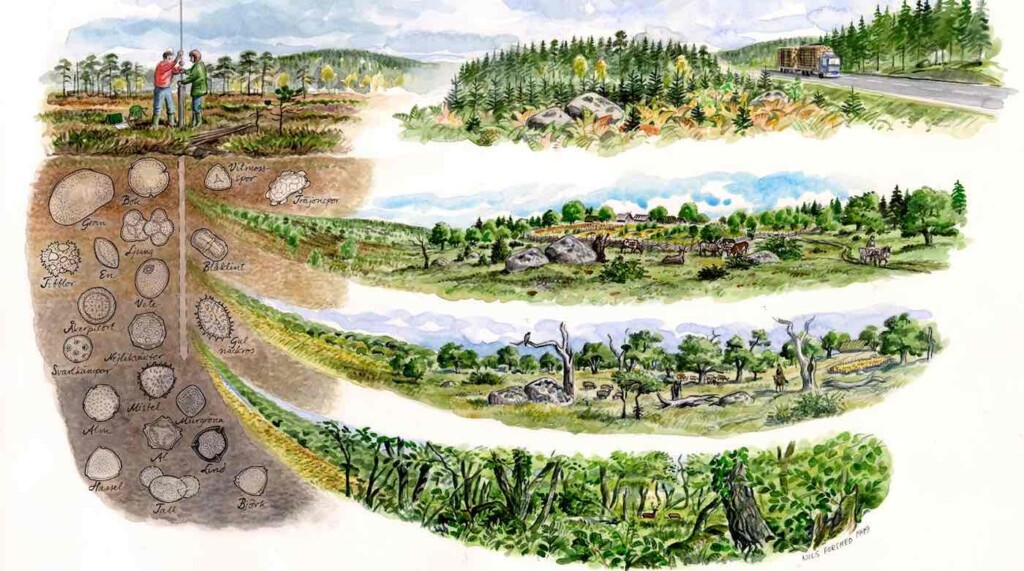
Scientists have devised a method of analyzing preserved hazelnut shells to find out what the habitat was like in prehistoric times.
The Oxford University team note that their research could show not only what a local environment looked like thousands of years ago—whether sites were heavily forested or open and pasture-like—but also how humans may have impacted their habitats over time.
The scientists gathered hazelnuts from trees growing in varying light levels at three locations in southern Sweden, and analyzed their carbon quantities and the relationship between these values and the light levels the trees were exposed to.
They then investigated the carbon values of hazelnut shells from archaeological sites also found in southern Sweden.
They selected shell fragments from four Mesolithic sites and 11 sites ranging from the Neolithic to the Iron Age, some of which had been occupied in more than one period.
The Mesolithic, or middle stone age, ended around 10,000 years ago, the Neolithic was around 6,000 years ago and the Iron Age ended around 2,500 years ago.
The authors note that humans in northern Europe have been using hazel trees as a source of materials and food for thousands of years.
“The nuts are an excellent source of energy and protein, and they can be stored for long periods, consumed whole or ground,” said senior author Dr. Karl Ljung, of Lund University, Sweden. “The shells could also have been used as a fuel.”

LOOK: Family Discovers 8 Huge Dinosaur Footprints While Walking on Eroded Beach
The ratio of carbon dioxide in hazel trees is heavily influenced by sunlight. Where there are fewer other trees to compete for the sunlight and rates of photosynthesis are higher, the hazels will have higher carbon isotope values.
Therefore, based on their analysis of carbon in hazelnut shells the team were able to assign their samples to one of three categories: closed, open, and semi-open.
“This means that a hazelnut shell recovered on an archaeological site provides a record of how open the environment was in which it was collected,” added Dr. Ljung. “This in turn tells us more about the habitats in which people were foraging.”
The study, published in the journal Frontiers in Environmental Archaeology, shows that nuts from the Mesolithic had been collected from more closed environments, while nuts from more recent periods had been collected in more open environments.
By the Iron Age, most of the people who collected the hazelnuts sampled for this study had gathered the nuts from open areas, not woodlands. Their microhabitats had completely changed.
The team hopes to do further research to directly date and measure the carbon isotopes of hazelnut shells from a wider range of sites and settings.
Lead author Dr. Amy Styring, from the University of Oxford said, “Our study has opened up new potential for directly tying environmental changes to people’s foraging activities and reconstructing the microhabitats that they exploited.”
“This will provide much more detailed insight into woodlands and landscapes in the past, which will help archaeologists to better understand the impact of people on their environment.”
SHARE the Nutty News With Ancient History Buffs on Social Media…
Sunday Funnies: Dog Tore into Cereal Box but Gets Caught With Sugar Puffs All Over Her Fur

A guilty pup was left covered with sugar puffs after she tore into the cereal box.
The hilarious moment was caught on camera by owner Heather Hunt coming home to discover her two-year-old Zuchon Crumpet completely covered from head to toe.
“For the love of God! Who left the cereal cupboard open?” exclaimed the 51-year-old as she arrived on the scene of the crime.
“I came back in from shopping and it was all over the floor everywhere,” said Heather.
“The sugar puff cereal is covered in honey so it stuck to her fur like tar.”
Getting it out of Crumpet’s fur proved impossible.
“I tried to wet them but it just turned them into wallpaper paste.
“When I finally decided to take her to the groomers, it took them them nearly three hours to wash her, cut all of the cereal out and make her look like a dog again—a completely different dog!”
LOOK: Couple Orders a Cake Replica of Their Dog But it Was So Realistic They Couldn’t Cut it
This isn’t the first time Crumpet has gotten into mischief: “She’s always getting into trouble.
“I can’t leave a (grocery) bag unattended as they’ll be straight into the ham.
“They drive me insane but I love them to death.”
COMPARE DOG STORIES By Sharing the Chuckle on Social Media…
Scientists Unveil First Evidence That Triceratops Lived in Herds
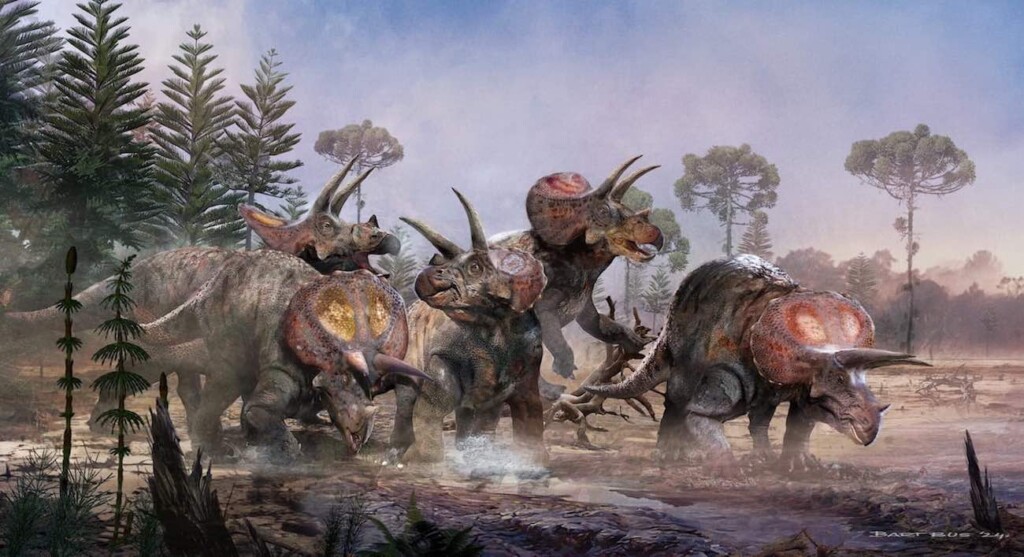
Despite films like Jurassic Park, depicting them traveling in herds, all known fossils of Triceratops (over 50 in total) have been solitary individuals found alone (or a couple of juveniles together).
But new Dutch research just completed suggests the iconic dinosaur species did, indeed, move in herds.
A group of paleontologists from Naturalis Biodiversity Center in the Netherlands went to work in the US looking for a Tyrannosaurus, but ended up making the discovery of a lifetime—a herd of five triceratops.
The team was searching in Wyoming when they found the first Triceratops. And then, they found another one. And another one. And more.
The dig turned into a project that would last for more than ten years—and eventually uncover 1,200 bones and fragments of at least five individuals.
15 years ago, the best guess from scientists was that traveling together “wasn’t something they did full time.”
But the material unearthed in Wyoming was of “very good quality,” according to Dr. Jimmy de Rooij who just published the study as his doctorate at Utrecht University.
“Research into the physical and chemical properties of the hundreds of triceratops teeth tells of a migratory existence—one that was the same for all five of the dinosaurs.”
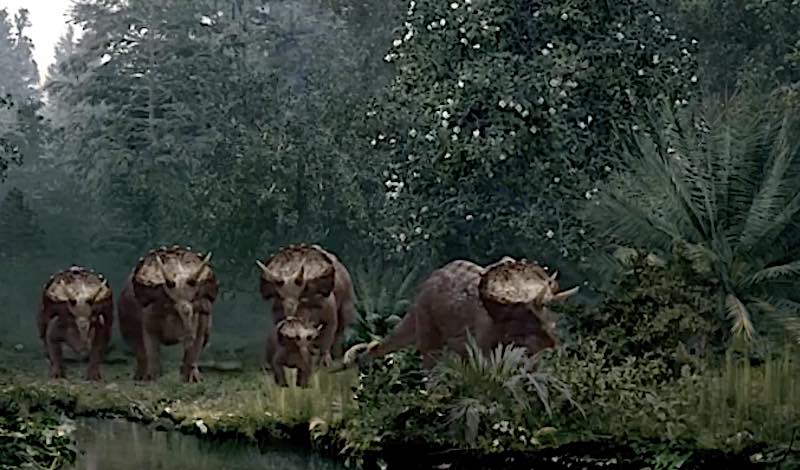
A team of professional and volunteer paleontologists and technicians spent years removing the remains from the quarry.
“The details of the bone bed indicate that the five dinosaurs died together, possibly mired in a swamp,” said the doctoral student. “They are in a thin layer of rock, without bones of other species.”
“This enabled us to show that these triceratops grew really slowly.
“This species of dinosaur teamed up, at least occasionally, and that leads to all kinds of new questions (like) ‘How complex was this social behavior, exactly?’”
Professor Anne Schulp, de Rooij’s supervisor, said proudly: “The national natural history museum of the Netherlands now has the biggest triceratops find in the world.”
LOOK: Prehistoric Bird Once Thought to Be Extinct Returns to New Zealand Wild
De Rooij’s work didn’t just result in a dissertation, but also an entire exhibition surrounding his research of the herd. A national exhibit will kick off for free this summer in five cities around the Netherlands, and at the Naturalis museum in October.
“The five triceratops will be displayed as they lived and died 67 million years ago: together.”
HATCH SOME AWE By Sharing This With Your Herd on Social Media…
Photographer Captures Jaw-Dropping Photos of Moon Over Canadian Ice-scape

A British photographer has captured some exquisite pictures of a moonrise in Canada’s frozen North.
Paul Goldstein took a morning trek in minus-35 degree temperatures last week in Canada’s Nunavut province.
“This far north, the moon barely sets at this time of year. It is cold even for the Inuits.”
“But a few souls brave the temperature to photograph bears, the aurora, and indeed the full moon in this case,” said the Wimbledon-based nature guide.
“No such thing as cold, just poor equipment,” quipped the intrepid shooter who shares his pics on Instagram.
“This far North, no matter how many layers you cocoon yourself with—six in this case—the cold still seeps in. But who cares with a morning like this.”
LOOK AND GRIN: The Comedy Wildlife Photo Winners Are Here–And They’re Absolutely Adorable

Indeed, he took just a ten minute walk from their camp situated on a frozen fjord when the breathtaking scene unfolded.
“It is humbling to think of the trappers and explorers back in the day who had none of our comforts.
WHOPPERS: Nat Geo Unveils Top ‘Pictures of the Year’ Captured From Nat Geo Photographers in 2023
“Even the moon looks cold!”
DON’T FREEZE OUT YOUR FRIENDS: Share The Beauty on Social Media…
New Research into Beethoven’s DNA Reveals He Didn’t Inherit his Musical Talent

The famous composer Ludwig van Beethoven did not inherit much musical talent from his ancestors, according to a new study that shows his genes revealed quite a low predisposition for beat synchronization or musicality.
Researchers say the findings are a good example of how our DNA doesn’t determine what talents will be developed in life.
The team from Vanderbilt University Medical Center in Nashville, Tennessee, worked with colleagues from the Max Planck Institutes for Empirical Aesthetics in Germany and Holland.
They analyzed Beethoven’s DNA from a hair sample that was extracted for a different study last year.
They set out to investigate his genetic musical predisposition, an ability closely related to musicality—comparing his DNA to nearly 14,500 other people in databanks.
They used his recently sequenced DNA to calculate a polygenic score as an indicator for his genetic predisposition for beat synchronization.
“Interestingly, Beethoven, one of the most celebrated musicians in history, had an unremarkable polygenic score for general musicality—ranking between the 9th and 11th percentile based on modern samples,” said Vanderbilt doctoral candidate Tara Henechowicz.
His genetics were compared to population samples from the Karolinska Institute in Sweden and Vanderbilt’s BioVU Repository.
The authors who published the study this week in the journal Current Biology said it would be wrong to conclude that the maestro had little talent, but it does highlight the problems in making predictions based purely on DNA.

“The mismatch between the DNA-based prediction and Beethoven’s musical genius provides a valuable teaching moment because it demonstrates that DNA tests cannot give us a definitive answer about whether a given child will end up being musically gifted,” said Ms. Henechowicz.
INSPIRING: Orchestra Allows Deaf People to ‘Hear’ Beethoven Through Touch – Much Like the Maestro Did
Prior studies have found an average heritability, which is the proportion of individual differences explained by all genetic factors, of 42 percent for musicality.
“The current study and other recent work also suggest that environment plays a key role in musical ability and engagement as well,” added co-author Dr. Reyna Gordon.
“In the current era of ‘big data’, such as Vanderbilt’s BioVU repository, we have had the opportunity to look in fine detail at large groups of people to uncover the genetic underpinnings of traits such as rhythm ability or being musically active.”
ENCOURAGE A MUSICAL TALENT By Sharing the Motivation on Social Media…
“Idealism increases in direct proportion to one’s distance from the problem.” – John Galsworthy
Quote of the Day: “Idealism increases in direct proportion to one’s distance from the problem.” – John Galsworthy
Photo by: Andrei Turca (in Romania)
With a new inspirational quote every day, atop the perfect photo—collected and archived on our Quotes page—why not bookmark GNN.org for a daily uplift?

Good News in History, March 31

33 years ago today, the Warsaw Pact officially disbanded, ending the military build-up and stand-off between European communism and European democracy. As many of the communist leaders had already been overthrown by their populations, the dissolution of the pact was more of a formality than a revolution, and even before it was disbanded member states were already cooperating with the West in the invasion to liberate Kuwait during the First Gulf War. READ more… (1991)




















